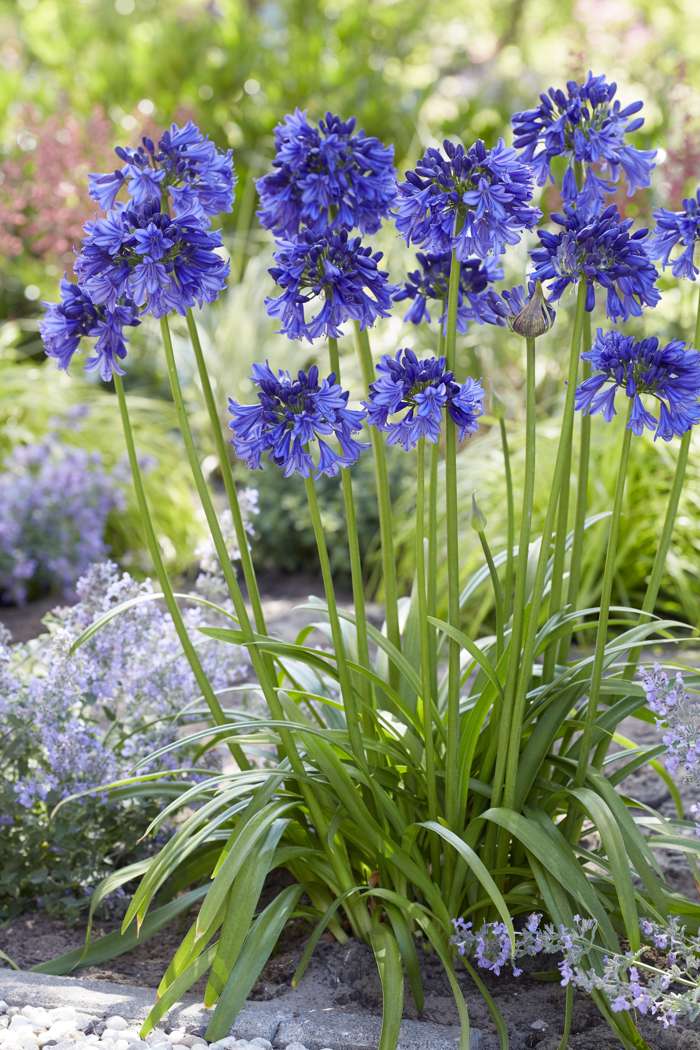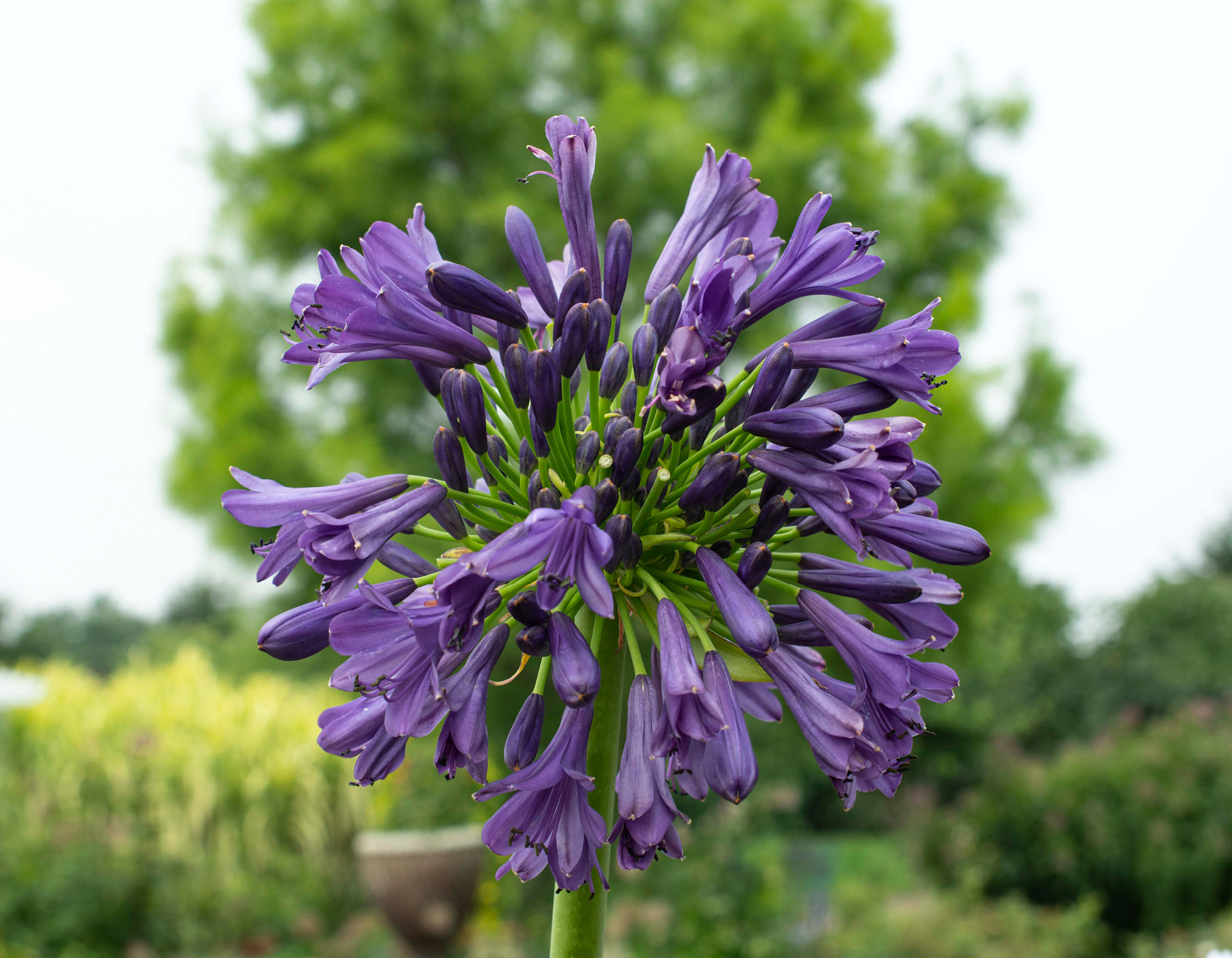Opening the Mysteries of Agapanthus: A Comprehensive Expedition of Ranges, Growing Strategies, and Upkeep Practices

Agapanthus, typically shrouded in secret due to its varied variety of varieties and complex maintenance demands, occurs as an enigmatic topic for many yard fanatics. With a wide variety of cultivars available, each boasting one-of-a-kind qualities and development practices, recognizing the intricacies of these plants can be both difficult and rewarding. As we explore the nuances of growing strategies and dive right into the essential maintenance techniques necessary to nurture these sensational blooms, a world of opportunities unravels for those looking for to understand the art of growing agapanthus.
Agapanthus Varieties Demystified
Agapanthus ranges display a diverse variety of attributes, making it crucial for garden enthusiasts to recognize the differences in between them for effective farming. The Agapanthus praecox, or Blue Lily of the Nile, is an additional popular alternative, flaunting huge round collections of white or blue blossoms atop tall stalks.
For those looking for a more small alternative, the Agapanthus 'Peter Frying Pan' is an ideal selection, with its smaller stature and delicate blue blossoms. On the other hand, the Agapanthus 'Storm Cloud' variety offers a dramatic flair with its deep purple blossoms and dark vegetation (Agapanthus). Furthermore, the Agapanthus 'Albus' sticks out for its pure white blooms, producing a spectacular contrast in any yard setup
Understanding these differences can aid garden enthusiasts choose the most ideal Agapanthus selection for their certain requirements and preferences, guaranteeing a lively and prospering garden screen.
Growing Agapanthus Like a Pro
When growing Agapanthus for optimum development and aesthetic effect, meticulous interest to dirt high quality and sunshine exposure is extremely important. Select a growing location that obtains full sunshine to partial color, as Agapanthus typically favors at least 6 hours of sunshine daily for durable flowering.

Necessary Upkeep Tips for Agapanthus
To ensure the ongoing wellness and vitality of your Agapanthus plants, what secret maintenance techniques should be prioritized throughout the expanding season? Agapanthus plants like evenly damp navigate to this site soil however can endure short durations of dry spell once developed. Agapanthus plants benefit from division every couple of years to prevent overcrowding, improve flowering, and invigorate the plant.
Troubleshooting Common Agapanthus Issues
Determining and immediately attending to usual concerns that might influence the health of your Agapanthus plants is important for preserving their vigor and elegance. Guarantee your Agapanthus obtain adequate sunshine, ideally around 6-8 hours per day. By being alert and dealing with these typical issues promptly, you can assist your Agapanthus prosper and grow in your garden.
Making The Most Of Agapanthus Blooms: Expert Approaches
Enhancing the vibrancy and wealth of Agapanthus flowers needs a strategic approach that uses optimum growing problems and specialist methods. To optimize Agapanthus blossoms, begin with choosing the ideal selection for your region and preferred aesthetic. Agapanthus selections differ in elevation, flower shade, and blossom time, so select one why not try this out that matches your garden's requirements.
Appropriate planting is vital for robust blooming. Plant Agapanthus in well-draining dirt with ample sunshine exposure. Ensure the soil is rich in nutrients and natural matter to support healthy and balanced growth and prolific flowering. Regular watering, particularly throughout the active growing period, is vital to protect against stress and anxiety and urge growing.
Fertilize Agapanthus with a well balanced plant food to promote blooming. Deadheading invested blooms can reroute the plant's energy into generating new blossoms (Agapanthus). Separate chock-full globs every few years to revitalize the plant and boost blooming
Lastly, secure Agapanthus from parasites and diseases that can hinder blooming. Carrying out these expert strategies will certainly assist you accomplish a magnificent display of Agapanthus blossoms in your garden.
Verdict
In verdict, the mysteries of agapanthus have been unveiled via a thorough expedition of selections, growing methods, and maintenance methods. By troubleshooting common issues and implementing expert techniques, one can optimize agapanthus blooms and develop a spectacular yard display screen.

When growing Agapanthus for optimal development and visual influence, precise attention to dirt quality and sunshine direct exposure is paramount.To grow Agapanthus like a pro, space the plants according to their fully grown size to permit for proper air blood circulation and avoid congestion. Agapanthus plants benefit from department every few years to protect against overcrowding, boost blooming, and renew the plant.In conclusion, the secrets of agapanthus have been introduced with this content a thorough exploration of selections, planting techniques, and upkeep practices.